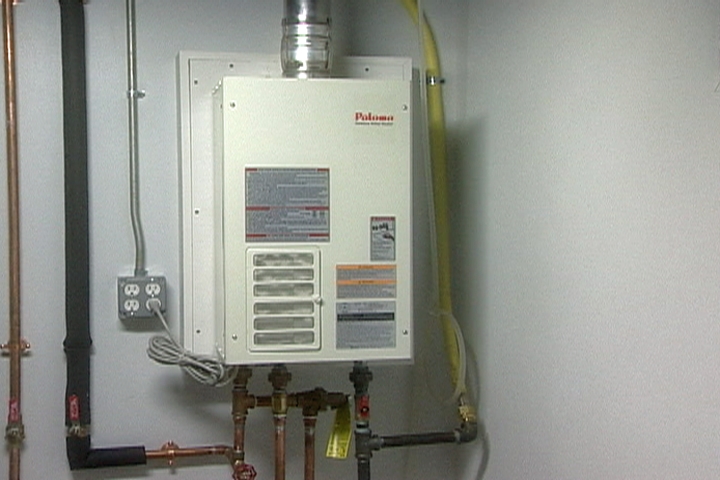How do you feel on the subject of Water Heater Maintenance Tips You Can't Afford to Forget?

Warm water is necessary for day-to-day comfort, whether it's for a revitalizing shower or washing meals. To guarantee your hot water system runs successfully and lasts longer, routine upkeep is key. This article provides functional pointers and understandings on how to preserve your home's warm water system to avoid interruptions and pricey repairs.
Introduction
Preserving your home's warm water system might seem complicated, yet with a few basic steps, you can ensure it operates efficiently for several years ahead. This overview covers everything from comprehending your warm water system to DIY upkeep ideas and recognizing when to call in expert assistance.
Value of Keeping Your Warm Water System
Regular maintenance not only extends the life expectancy of your warm water system however also guarantees it runs efficiently. Disregarding maintenance can result in lowered efficiency, higher power costs, and even premature failing of the system.
Indicators Your Hot Water System Requirements Upkeep
Knowing when your hot water system needs interest can avoid major problems. Keep an eye out for indicators such as inconsistent water temperature, unusual noises from the heater, or rustic water.
Comprehending Your Warm Water System
Prior to diving right into upkeep tasks, it's useful to understand the basic parts of your hot water system. Typically, this includes the water heater itself, pipes, anode rods, and temperature level controls.
Monthly Maintenance Tasks
Routine month-to-month checks can aid capture small issues prior to they intensify.
Flushing the Water Heater
Purging your hot water heater eliminates sediment buildup, boosting performance and extending its life.
Checking and Replacing Anode Rods
Anode poles prevent rust inside the storage tank. Checking and replacing them when worn out is crucial.
Examining and Adjusting Temperature Level Settings
Readjusting the temperature settings makes certain optimum performance and safety and security.
Do It Yourself Tips for Upkeep
You can do several maintenance tasks on your own to keep your hot water system in leading problem.
Checking for Leakages
On a regular basis evaluate pipes and connections for leakages, as these can lead to water damage and greater expenses.
Testing Stress Relief Valves
Examining the pressure safety valve ensures it works appropriately and stops too much pressure build-up.
Protecting Pipelines
Protecting hot water pipelines reduces warm loss and can save energy.
When to Call a Specialist
While do it yourself upkeep is helpful, some problems require specialist know-how.
Complicated Issues Calling For Professional Assistance
Instances include major leakages, electrical issues, or if your hot water heater is regularly underperforming.
Regular Specialist Maintenance Perks
Specialist maintenance can consist of detailed evaluations, tune-ups, and making sure conformity with security standards.
Conclusion
Regular upkeep of your home's hot water system is crucial for performance, longevity, and expense financial savings. By complying with these ideas and knowing when to seek professional help, you can make certain a reputable supply of warm water without unanticipated disruptions.
How to Maintain an Instant Hot Water Heater
Before tinkering with your hot water heater, make sure that it’s not powered on. You also have to turn off the main circuit breaker and shut off the main gas line to prevent accidents. Also turn off the water valves connected to your unit to prevent water from flowing into and out of the appliance. 2. When you’re done, you have to detach the purge valves’ caps. These look like the letter “T†and are situated on either side of the water valves. Doing so will release any pressure that has accumulated inside the valves while at the same time avoid hot water from shooting out and burning your skin. 3. When the purge valves’ caps are removed, you have to connect your hosing lines to the valves. Your unit should have come with three hoses but if it didn’t, you can purchase these things from any hardware or home repair shops. You can also get them from retail stores that sell water heating systems. Read the user’s manual and follow it to complete this task properly. When the hosing lines are connected, open the purge port’s valves. 4. You should never use harsh chemical cleaners or solutions when cleaning your unit. Make use of white vinegar instead. It should be undiluted and you’ll probably use about 2 gallons. 5. Now flush your water heater. This task should probably take about 40 minutes. We can’t give you specific directions for this because the procedure is carried out depending on the type, model and brand of your heater. With that being said, refer to the user’s manual. 6. When you’re done draining the unit, you have to turn off the purge port valves again. Remove the hosing lines that you earlier installed on each of the water valves. Put the valve caps (purge port) back in their respective places and be very careful so as not to damage the rubber discs that are found inside these caps. 7. Now that everything’s back in place, check your user’s manual again to find out how to reactivate your water heating system. 8. Once it is working, turn one of your hot water faucets on just to let air pass through the heater’s water supply pipes. Leave the tap on until water flows smoothly out of it. https://www.orrplumbing.com/blog/2014/september/how-to-maintain-an-instant-hot-water-heater/

As a keen reader about Tips on Maintaining a Water Heater, I was thinking sharing that piece of content was beneficial. Feel free to pause to promote this blog if you liked it. Thanks for your time. Come back soon.
Book Your Appointment